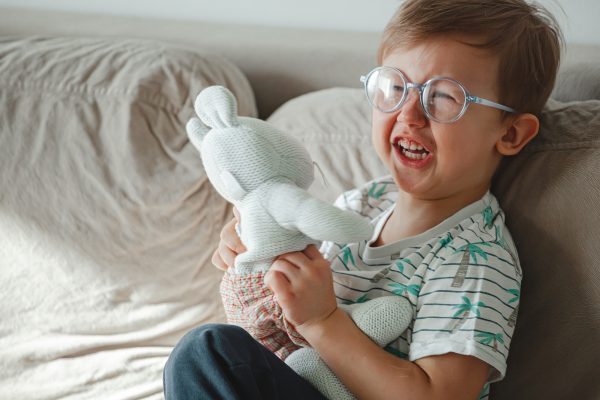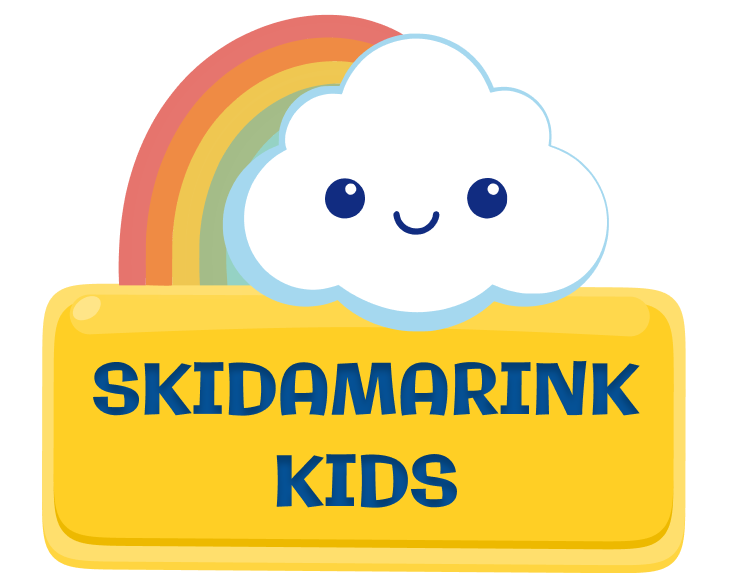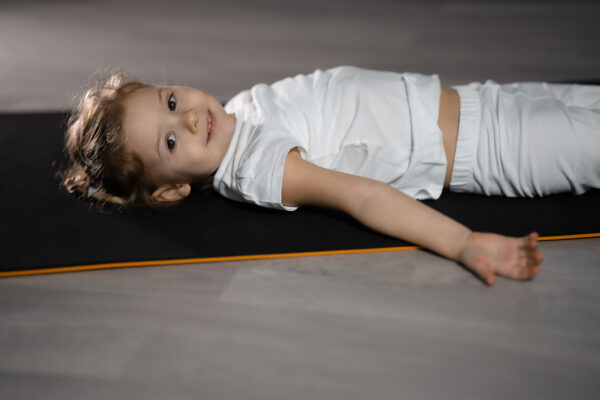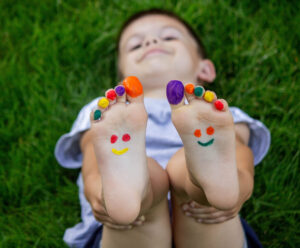Your 4-year-old melts down over loud noises, which causes extreme fear of public places. Or maybe, your 6-year-old still sucks her thumb or has difficulty with different food textures. Learning to ride a bike or have good handwriting is still a challenge for your 8-year-old. These seem like different problems. But they could share one hidden cause: retained primitive reflexes in children.
These early movement patterns matter more than you might think. Primitive reflexes in children are an important part of development that impacts everything from coordination, posture, to self regulation, and so much more. Understanding these reflexes gives you valuable insights into your child’s development. It can also help explain certain challenges they experience.
⭐ Retained Primitive Reflexes in Children - Quick Introduction
- Primitive reflexes are automatic movements that should disappear by age one (usually between 4-9 months)
- Retained reflexes can impact learning, postural stability, balance, sensory processing, motor coordination, and emotional regulation
- Common signs include clumsiness, poor baalnce, core weakness, developmental delays attention difficulties, and behavior challenges
- Movement activities and tummy time support healthy reflex integration
- Early identification and treatment helps reduce delays, learning and behavioral difficulties
- Professional help is available through occupational therapy, parent courses, and The Brain Balance centers
What Are Primitive Reflexes?
Primitive reflexes are involuntary movement patterns that begin in the womb. They guide early development. Think of them as your baby’s first operating system. They’re automatic responses controlled by the brainstem. No conscious thought is required. This helps baby move and respond to their world while the brain is still developing. Higher level of movements and thoughts come later.
These aren’t conscious choices. They’re hardwired responses to a movement or stimulation. Here are two examples:
The Grasping Reflex
This reflex occurs when a baby closes their hand when a finger or object is place their palm. This tight grip helps develop the foundation for future fine motor skills and helps with bonding.
The Rooting Reflex
Rooting reflex – Baby opens and turns their mouth when their cheek is stroked. This helps newborns find food. It’s essential for early feeding success.

These reflexes serve essential purposes:
- Guide movement in the womb
- Assist in the birthing process
- Direct movements in early infancy
- Aid early survival
The Natural Progression of Reflex Integration
Reflex integration is the natural process where primitive reflexes gradually disappear. This happens as your child’s nervous system matures. The process usually occurs during the first year of life.
As your baby grows, these early reflexes should naturally fade away. Here’s why:
- More mature movements emerge
- Postural reflexes take over for core strength and balance
- The nervous system matures
- Higher brain centers develop for cognitive learning
Think of it like upgrading your phone. The old system served its purpose. Now your child needs more advanced capabilities. This natural progression creates the neurological foundation for more complex skills to develop. This includes self regulation for working memory, planning and being able to control their behavior.
Understanding Retained Primitive Reflexes in Children
Sometimes reflexes don’t fully integrate. When this happens, they remain “retained.” This can impact development in surprising ways. This limits the brain from maturing, as well as postural reflexes from developing. The effects of this can be seen in various areas of life and explains some of challenges kids experience.
Here’s something concerning. With the increase in developmental delays, there’s also been a surge of children with unintegrated reflexes. They usually go together. Modern lifestyle factors like limited floor time and reduced movement opportunities may contribute to this rise.
Want to understand how retained reflexes affect self regulation and behavior? Read our blog Why Your Child Can’t Self Regulate: The Hidden Brain Issue.
When primitive reflexes persist beyond their typical timeline, they cause delays in development and limit self regulation. These automatic responses keep triggering, making it hard for purposeful movements and thoughts. This shows up as behavioral, learning, or physical difficulties.
Signs of Retained Primitive Reflexes
Recognizing the signs early can help you get support for your child sooner. However, remember that every child develops differently.
Physical Development Challenges

- Delayed motor skills compared to peers
- Skipped crawling
- Poor balance and frequent falls
- Limited core strength- difficulty sitting up and putting on shoes
- Frequent clumsiness and bumping into things
- Walks on toes
- “W” sits or has significantly slumped posture
- Coordination issues with activities like catching balls, shoe tying or riding bikes
- Feeding difficulties such as transitioning to sippy cup and table foods that require good chewing
Children with retained reflexes often look “clumsy” or “uncoordinated.” But this isn’t laziness or lack of trying. Their nervous system is not working effectively.
Sensory Issues
- Doesn’t tolerate different types of movement like swinging or upside down play
- Feeding difficulties such as transitioning to sippy cup and table foods that require good chewing
- Doesn’t like hands messy or picky eating patterns
- Avoids walking on grass or doesn’t like to wear socks and shoes
- Startles easily to loud noises, fearful of crowded spaces
Children with retained reflexes often are sensitive and avoid different textures and are easily overwhelmed by their environment.
Learning & Educational Challenges
- Attention difficulties in school settings
- Trouble copying from the board
- Reduced eye contact during conversations
- Social interaction challenges with peers
- Learning delays in reading or writing
- School performance issues despite intelligence
These challenges can be frustrating for everyone involved. Often, children with retained primitive reflexes are bright and capable. However, their retained reflexes create barriers to showing what they know.
Emotional & Behavioral Signs
Emotional Regulation:
- Anxiety and fearfulness
- Startles easily to sudden noises or movements
- Self-soothing difficulties
- Emotional control challenges
- Increased stress response to minor changes
Daily Behaviors:
- Trouble sitting still with constant motion and fidgeting
- Poor impulse control
- Reduced safety awareness
- Sleep difficulties
- Frequent irritability and increased meltdowns

The emotional impact of retained reflexes can be significant. These behaviors aren’t rooted in defiance. They’re your child’s nervous system trying to cope with reflexes that should have integrated but didn’t.
Common Causes of Retained Primitive Reflexes in Children
Understanding what causes reflexes to be retained helps you prevent them in the future. Many of these factors are outside of your control and aren’t to cause any guilt. For a long time I blamed myself for the stress during my pregnancy for my daughter’s challenges. Yet this didn’t make things better for her. Focusing on the pasts robs us of being present and connecting with our children each day. Remember, we are all doing the best we can and learning how to see development differently! The good news is that support and intervention can make a tremendous difference.
Limited Movement Opportunities:
- Reduced tummy time in infancy
- Limited floor play
- Too much time in baby equipment (swings, bouncers)
- Skipped crawling stage or very brief crawling period
- Restricted movement (NICU and medically fragile babies face higher risk)
Modern parenting sometimes limits the movement experiences babies need. Well-meaning safety measures and convenient baby equipment can actually restrict important movements. These movements support reflex integration and motor development.
Early Life Events
- Pregnancy stress
- Birth complications or interventions
- Frequent ear infections in infancy
- Early trauma or extended hospitalizations
- Multiple falls or head injuries
- Prematurity
- Medical conditions affecting development
How can you Support Healthy Reflex Integration?
While primitive reflexes should integrate naturally, modern lifestyles sometimes limit necessary movement experiences. Here’s how you can help support healthy development:
Provide ample tummy time in early infancy. Start from day one! Even a few minutes several times daily builds the foundation your baby needs.
Encourage crawling before walking. Don’t rush this important stage! Crawling creates vital cross-body connections in the brain. These connections support future learning.
Limit time in restrictive baby equipment. Swings and bouncers are fine for short periods. But babies need lots of free floor time to move naturally.
Engage in playful movement activities. Dance, roll, spin, swing, and jump together! Movement should be both joyful and varied throughout early childhood.
Support cross-body movements. Activities that cross the midline of the body help integrate reflexes naturally through play.
Create sensory-rich play opportunities. Different textures, surfaces, and movement experiences give the nervous system varied input. This helps it mature properly.
Follow developmental sequences without rushing. Trust your child’s natural timeline. Pushing them to sit, stand, or walk before they’re ready can interfere with proper development
Focus on self regulation to lower stress levels. Stress keeps the body in Fight, flight, freeze state and interferes with reflex integration. Take some deep breaths and help your child co regulate. This will led to better connections. Check out the Tantrum Tamer App for great support.
Want Additional Support?
It is important to note that reflex integration is a piece of the puzzle and works very well along with other activities. In Addition to reflex integration, a routine that support the following can be a great combination:
When to Seek Professional Help
Important Note:
This information is for educational purposes and is not meant as medical advice or for diagnosis. We’re here to give you support and provide activities that can help your child. However, if your child is showing significant struggles, it’s important to get individual professional help in addition to providing support at home. Please speak to your child’s pediatrician to discuss any concerns you have,
Trust your parental instincts. If something seems “off,” it’s worth investigating. Early identification makes intervention much more effective.
Consult your pediatrician if you notice:
- Multiple signs occurring together
- Ongoing developmental concerns that persist over time
- Persistent behavior challenges that don’t improve
- Learning difficulties once school begins
- Motor skill delays compared to peers
💡 Pro Tip: Early identification and support can make a significant difference in your child’s development. There are occupational therapist, physical therapist, or specialized programs that can help. Don’t hesitate to speak to your child’s doctor for professional guidance if you have concerns! Not all therapist are trained in primitive reflexes, so ask before scheduling an evaluation.
Common Questions About Retained Primitive Reflexes in Children
Will my child outgrow retained reflexes?
Some children do naturally integrate reflexes over time. This happens especially with increased movement opportunities. However, many children need specific intervention to fully integrate retained reflexes.
The good news is that children usually respond well to reflex integration exercises and parents typically see very positive changes. Of course how your child will respond depends on other factors including the severity of these unintegrated reflexes. Yet, the brain remains capable of change throughout childhood.
How long does reflex integration take?
This varies by child and depends on which reflexes are retained, as well as severity. Some children show improvement within weeks. Others need several months of consistent work. I have seen children even with very profound disabilities make progress with reflex integration exercises. In these cases they still had retained reflexes, yet showed functional progress.
The key is regular, daily practice of specific movements. Most reflex integration programs run 6-12 months. You’ll see noticeable improvements showing up along the way.
Is this related to ADHD or autism?
There’s a strong connection between retained reflexes and these conditions. Many children with ADHD or autism also have unintegrated primitive reflexes. However, retained reflexes in children can occur in any child.
Addressing the reflexes often improves symptoms. This includes attention difficulties, sensory processing challenges, and emotional regulation. These are core issues in both ADHD and autism. Children with ADHD and autism especially benefit from reflex integration work.
Can retained reflexes cause learning disabilities?
Retained reflexes are typically seen in children who are also have signs of a brain imbalance. When the right side of the brain is stronger and compensates for the left side of the brain, the results are learning challenges. When the nervous system is working against itself, tasks become much harder. This includes reading, writing, and paying attention.
Integrating the reflexes often reduces delays and difficulties, along with activities to support brain balance. This helps your child’s true abilities shine through.
What's the difference between primitive reflexes and sensory processing issues?
They’re closely related! Retained reflexes affect how the nervous system processes sensory information. Brain imbalances and retained primitive reflexes are suspected to be the root cause of “sensory issues”.
This is why reflex integration exercises often improves sensory processing challenges. Understanding the brain imbalance connection helps explain why these issues frequently occur together.
The Power of Understanding Primitive Reflexes
Recognizing the impact of retained primitive reflexes in children provides a valuable lens for understanding development. When we view behavioral, emotional, or learning challenges through this neurological perspective, it helps us respond differently. We can provide appropriate support rather than frustration or misunderstanding.
Many parents feel relieved when they discover that their child’s challenges have a neurological basis. This understanding shifts everything. This knowledge empowers you to get the right help instead of continuing to struggle.
Suspect Retained Reflexes?
Want to start helping your child right now? These two videos give insight on if your child might have a retained Fear Paralysis Reflex and how you can help it integrate. You can begin supporting your child’s nervous system development immediately.
🎥 Video 1: Signs of Fear Paralysis Reflex
Learn the specific signs that indicate your child may have a retained Fear Paralysis Reflex. This is one of the most common retained reflexes. It affects emotional regulation, sleep and anxiety, as well as balance. Since this reflex should have integrated before birth, addressing this one first helps the other ones integrate more easily.
🎥 Video 2: Fear Paralysis Reflex Exercise Demonstration
Watch me demonstrate this simple exercise on both a 5-month-old and a 4-year-old. This exercise is especially beneficial for children with high anxiety, sleep issues, and emotional regulation problems. This includes children with ADHD and autism. You can start doing this at home today.
Please Like, Share and Subscribe for the latest videos and to help us reach other families looking for help!
Closing Thoughts
Understanding retained primitive reflexes in children gives you a powerful tool for supporting your child’s development. What once seemed like random or frustrating behaviors now makes sense through the lens of neurological development.
If you recognize signs of retained reflexes in your child, don’t panic. Many children successfully integrate their reflexes with proper support. The brain remains capable of change throughout childhood. In fact, adults even benefit from reflex integration exercises. I know I have!
Take action by increasing movement opportunities at home. Consult with your pediatrician about your concerns. Seek evaluation from an occupational therapist if needed. Be patient and compassionate with your child while celebrating small improvements along the way.
By understanding these reflexes and taking action when needed, you’re giving your child the foundation they need to thrive. By supporting natural development patterns and seeking help when needed, you help ensure proper nervous system maturation. This creates a strong foundation for coordination, emotional regulation, and learning success.
Want More Resources to Help Integrate Retained Primitive Reflexes in Children?
Along with all the resources within this blog, these are two ways you can learn to address primitive reflexes at home:
Download Tantrum Tamer: the parenting app trusted by families to support emotional growth, peaceful routines, and happier homes.
– Kendra







